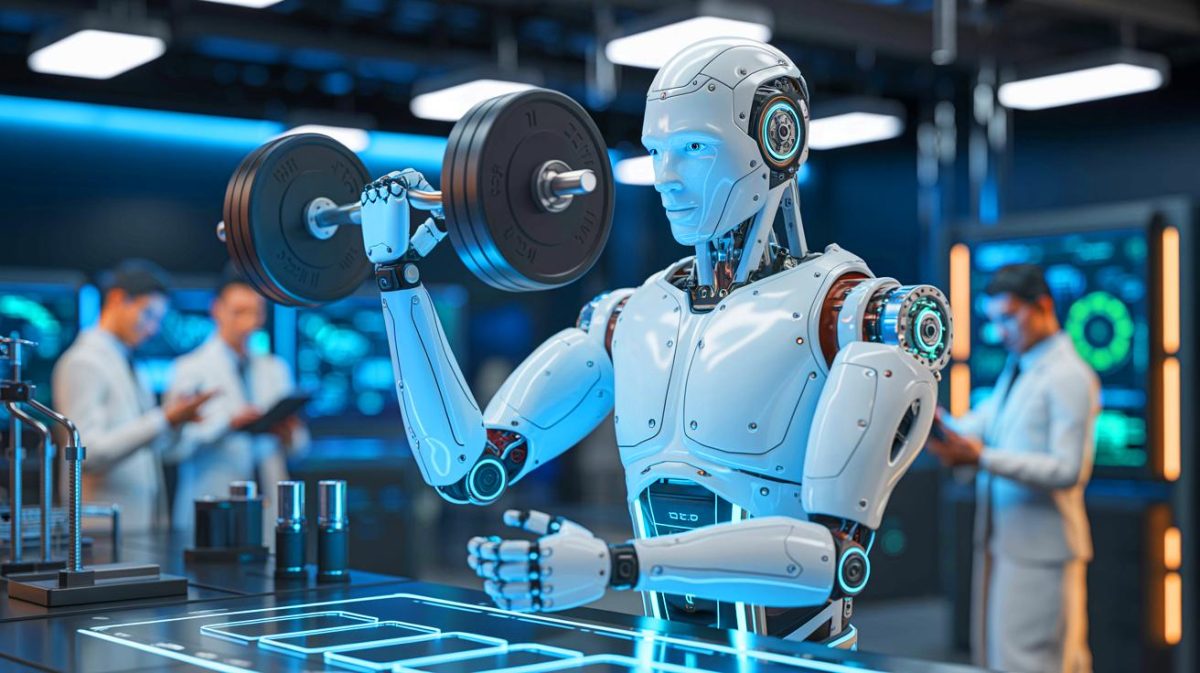| IN A NUTSHELL |
|
The Korea Atomic Energy Research Institute (KAERI) has once again pushed the boundaries of robotics with the unveiling of their latest innovation, the ARMstrong Dex humanoid robot. Designed for disaster response applications, this cutting-edge machine showcases extraordinary strength and precision, capable of lifting an impressive 88 pounds per arm. The recent demonstration video not only highlights the robot’s potential for handling heavy payloads but also emphasizes its role in enhancing safety during high-risk operations. As KAERI continues to develop this technology, the ARMstrong Dex stands as a testament to the institute’s commitment to advancing robotic capabilities.
Humanoid Robot Lifts Like a Pro
The ARMstrong Dex robot is a marvel of modern engineering, equipped with heavy-lift arms capable of handling 441 pounds, or 200 kilograms. This power, combined with dexterous manipulators, makes it an invaluable tool in environments where human presence is hazardous. KAERI has designed the robot to mimic human-like dexterity and strength, enabling it to perform complex tasks such as manipulating valves, plugging cords, and even carrying debris. Its ability to handle such operations is crucial in areas where human safety is a concern.
Mobility is another key feature of ARMstrong Dex. Equipped with caterpillar tracks, it can traverse rough terrain with ease, channeling hydraulic power through its arms to support various tasks. This mobility, paired with remote-control capabilities, significantly reduces human exposure to dangerous environments, particularly in scenarios involving radiation or debris. The robot’s impressive lifting and maneuvering capabilities are not just theoretical; they have been put to the test in real-world simulations, demonstrating its potential for practical application.
Advanced Robotics for Hazardous Environments
KAERI’s robotic innovations extend beyond ARMstrong Dex. The institute’s program also includes smaller mobile units like the TRAM and RAM, which focus on radiation mapping and monitoring. While the ARMstrong Dex shares some design elements with the “Big Tex” platform, it is a unique prototype dedicated to advancing mobility and manipulation capabilities. The recent 88-pound curl test may seem modest compared to its full capacity, but it highlights the robot’s fine control and stability, essential for handling hazardous materials.
In the demonstration video, ARMstrong Dex lifts and drops weights with remarkable ease, showcasing its dexterous hands and grip strength. The test involved manipulating a 44-pound weight plate, followed by doubling the weight, which the robot managed without any difficulty. Such tests are crucial for tuning joint hydraulics, feedback loops, and motion control strategies, ensuring the robot can perform precise, human-like movements in confined spaces.
Licensing and Industrial Applications
KAERI’s development of ARMstrong Dex is not just an academic exercise; it has practical industrial applications. The institute has licensed the robot’s manipulators, control systems, patents, and software to robotics firms like “Victex,” also known as “Big Tex,” for use in nuclear power plant dismantling. This includes tasks like decontamination, cutting, and handling radioactive materials, where the robot’s abilities can significantly enhance safety and efficiency.
The bicep curl test, designed as a targeted assessment, is part of ARMstrong Dex’s broader validation program. It supports KAERI’s mission to develop robust, remote-operated robots for disaster response, nuclear, and industrial tasks. By demonstrating its capabilities in controlled tests, KAERI is paving the way for practical implementations that could revolutionize how we approach high-risk environments.
Future Prospects for Disaster Response Robotics
As KAERI continues to refine and enhance the ARMstrong Dex, the future of disaster response robotics looks promising. The robot’s ability to perform complex tasks with precision and strength opens new possibilities for applications in environments that are currently deemed too dangerous for humans. From nuclear facilities to disaster-stricken areas, ARMstrong Dex could play a crucial role in improving safety and operational efficiency.
The development of such advanced robotics raises intriguing questions about the future of human-machine collaboration in hazardous environments. As technology progresses, how will robots like ARMstrong Dex redefine the boundaries of safety and efficiency in disaster response scenarios?
Did you like it? 4.4/5 (27)






Wow, ARMstrong Dex can lift more than I can! 😅
Qu’est-ce qui empêche ces robots d’être utilisés à des fins militaires?
Incredible! But can it make coffee too? ☕
Je suis impressionné par la capacité de ce robot à soulever autant de poids. Bravo KAERI !
Does ARMstrong Dex have any limitations in terms of terrain it can traverse?
88 lbs is impressive, but how does it handle delicate tasks?
This is great and all, but when will it be available for home workouts? 😆
Les robots prennent-ils vraiment le contrôle du monde maintenant? 😜